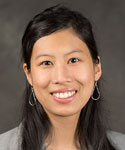 With constant changes in the healthcare, political and social landscapes, it’s important modern medical educational programs prepare students to practice in real-world settings, while providing them with core skills and enabling them to participate in lifelong learning.
With constant changes in the healthcare, political and social landscapes, it’s important modern medical educational programs prepare students to practice in real-world settings, while providing them with core skills and enabling them to participate in lifelong learning.
As a faculty member at the University of Wisconsin School of Medicine and Public Health, Tiffany Lin, MD, focuses on such outcomes in two roles—as the assistant block director of the medical school curriculum and as the associate director of the rheumatology fellowship program.
The Curriculum
In October 2016, when Dr. Lin took on the first role, the institution embarked on its first year of a redesigned medical school curriculum—an initiative that took more than 200 individuals to develop over a decade.
“Instead of the traditional two years of classroom teaching followed by two years of clinical experiences, the new curriculum has an integrated approach that incorporates basic science and clinical medicine at every step,” Dr. Lin says. “The curriculum is designed to provide students with core knowledge, teach them how to be lifelong learners and equip them to solve challenging problems.”
The curriculum is divided into three phases: Phase 1 replaces traditional classroom teaching with interactive team-based discussions and self-paced, online modules. Students participate in patient-centered education cases in small groups during Phase 1, which comprises the first 18 months of the program.
“The cases help [the students] connect foundational concepts to clinical scenarios they may encounter as physicians,” Dr. Lin explains. In small groups, students identify the learning objectives for each case. After reaching a consensus regarding the learning objectives, they individually conduct research to understand and learn the objectives behind the case. Then, the entire group reconvenes and the faculty member reveals the intended learning objectives and the group shares what they’ve learned. “The majority of the time, the students are successful in figuring out the objectives on their own,” Lin says.
“Working in groups helps students learn and approach problems in a more comprehensive way, and teaches them teamwork, communication and problem-solving skills,” Dr. Lin says. “Approaching medical school from a clinical case perspective more accurately reflects real-life approaches to clinical cases.” The curriculum also requires more online coursework than traditional classroom learning, which allows students to learn at their own pace.
Specialties: Another change is the new program’s greater focus on rheumatology. Previously, students studied rheumatology for only three days during the first two years of their medical education. Now, related specialties are integrated. Rheumatology is part of an eight-week block, which also includes immunology, dermatology and infectious diseases, conducted during the first two years.



